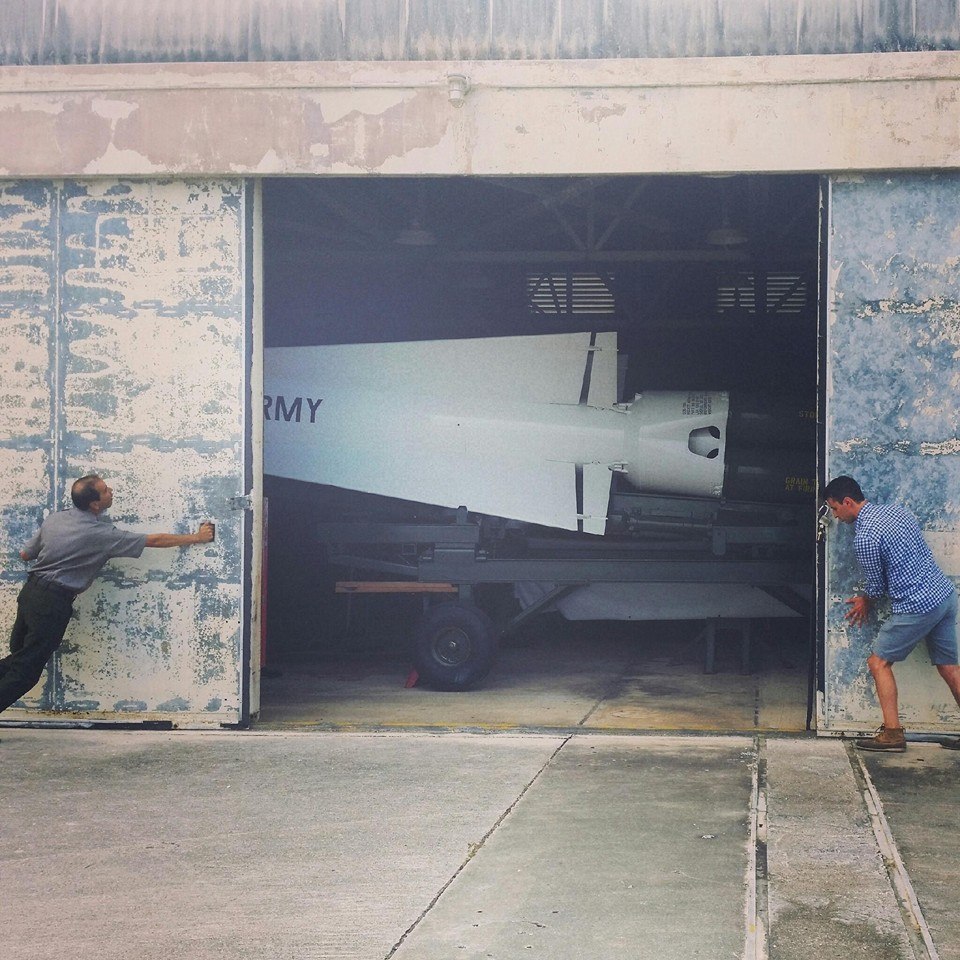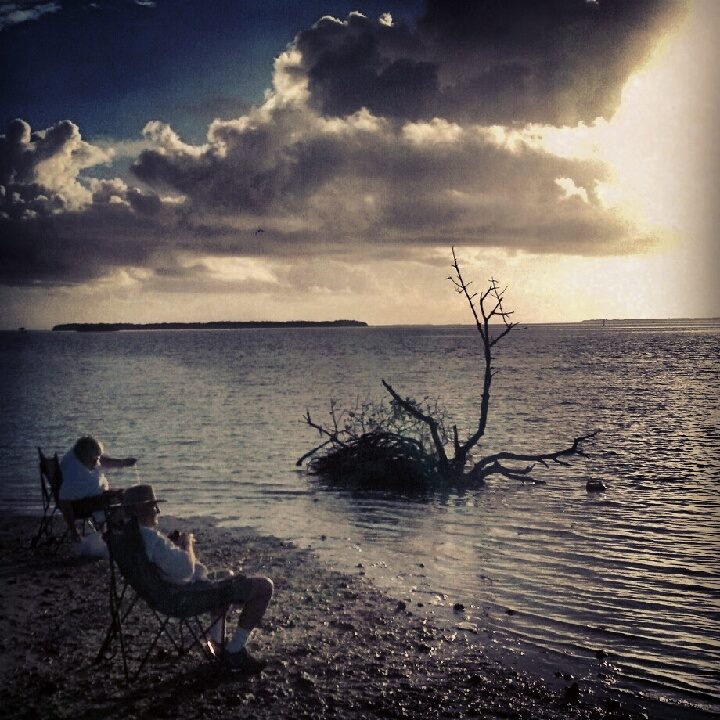
Will the Everglades, and Its Surprises, Ever Get Full Protection? (Op-Ed)

Michael Sainato is a freelancer with credits including the Miami Herald, Huffington Post and The Hill. Follow him on Twitter at @msainat1. Sainato contributed this article to. He contributed this article to Live Science's Expert Voices: Op-Ed & Insights.
There is no place on Earth like Everglades National Park. Fresh water and Earth converge into one of the richest and most diverse ecosystems on the planet. It is the largest tropical wilderness in the United States and only one of three places in the world that can claim listing as an International Biosphere Reserve, a World Heritage Site and a Wetlands of International Importance.
The Everglades has also been a battleground of controversy, as environmentalists and developers continuously struggle over its uses and resources. Early Florida politicians used to campaign on the idea of dredging and clearing the Everglades to stimulate economic growth and prosperity. Even today, the Comprehensive Everglades Restoration plan passed by the U.S. Congress years ago — the biggest environmental restoration undertaking the world has ever seen — still sputters through bureaucracy toward full implementation. [Why 'Protected Lands' Too Often Lose Protection (Op-Ed)]
A complex history
This past Earth Day, U.S. president Barack Obama used the Everglades as his stage to address the stark realities of climate change in the face of Florida politicians, such as Governor Rick Scott, who still uphold policies that fail to fully account for the environmental impacts of unchecked development and growth throughout the state.
"Climate change is threatening this treasure and the communities that depend on it, which includes almost all of south Florida. And if we don't act, there may not be an Everglades as we know it," president Obama said.
The livelihood of Florida depends on the Everglades. One out of every four Floridians depends on it for their drinking water. It generates more than a quarter billion dollars in tourism revenue annually: For every $1 invested in the park, it yields $10 in return, attracting more than a million visitors just last year.
And, the Everglades provides one of the best support systems Florida has against climate change and rising sea levels by mitigating saltwater intrusion to south Florida’s freshwater supplies and creating a natural protective barrier for Florida from tropical storms and hurricanes.
Early this year, a new caretaker of the park, superintendent Pedro Ramos, took office.
"I'm going to show you what the Everglades had to do with the Cuban Missile Crisis," Ramos said when we met. He grabbed the keys to his government issued white Ford Taurus just yards away from where president Obama held a photo op, and we left to meander through some Everglades back roads to a gated fence inundated with faded U.S. Army warning placards.
The Nike missile site in Everglades National Park maintained several nuclear missiles during the 1960 crisis. After the tensions with Cuba dissipated, the site was abandoned, nuclear warheads removed, and the hangars and bunkers were slowly reclaimed by nature — until a few years ago when a grant and restoration work by the Baker Aviation School put forth the efforts to tell this long forgotten Everglades story.
"If they were ever utilized, the nukes from this site would have altered the course of history forever," Ramos added as he unveiled a restored 40-foot missile behind the original rusted hangar doors.

A personal path to preservation
Ramos caught the National Park bug at a young age. His mother, widowed when he was seven years old, could not afford vacations or excursions to the fancy resorts on Puerto Rico's coastlines. Their bouts of leisure were spent at San Juan National Historic Site, what he calls "the most special place on the island."
After high school, he left the small island to attend college at the University of Massachusetts, Amherst. "To this day, it is one of the most frigid places I have ever been. I thought then it was inhuman to expect a Puerto Rican kid to live in that cold environment."
In Florida, things are a bit different. "People complain about the lack of seasons here in South Florida, but they are as marked here as anywhere else. Every one of them is special, but my favorite is the wet season, from October to December, when this place really comes alive. When it's flooded, going into a Cypress Dome is the only way to get intimate with this place. Every single time you go in one you see something different. The perpetual mystery of what's around every corner in such a foreign environment really helps you get to know this place well," said Ramos.
His degree in agricultural resource economics landed him a position at the U.S. Department of Agriculture, and he worked there for more than a decade while applying — every year — for an opportunity in the U.S. National Park Service. In 2001, he was finally hired as Administrative Officer of Big Cypress National Park, just north of the Everglades.
Big Cypress was first conceived with a dual mission of conservation and private use, two priorities typically seen as incompatible. When Ramos took office, off-road vehicles were tearing the park apart, rupturing through the delicate soil that would take decades to recover from the abuse.
With the support of environmental, traditional hunting, and the off-road vehicle communities, Ramos downsized the 26,000 miles of off-road vehicle trails to fewer than 500.
"It was a compromise of conservation and traditional uses that people thought could never be accomplished," he said. His tenure and pragmatic successes at Big Cypress made him a shoe-in when the position of superintendent at Everglades National Park opened up.
Preserving the Everglades
The Everglades also shares many of the same issues faced in Big Cypress, on even greater magnitudes. South Florida has more exotic species of fish, reptiles, birds, mammals and plants than in any other part of the United States.
More recently, invasive pythons have been one of the most prevalent and damaging species in the park, decimating prey and out-competing other predators. The park enlists the help of Iraqi-war veteran volunteers to catch the snakes in targeted park areas, protecting the endangered species the pythons threaten. Ramos cites going out with the volunteers as one of the highlights in his first few months as superintendent of the park.
Funding issues and budget concerns have forced Ramos and Everglades National Park to consider significant fee increases for park admission. If enacted, the changes would mark the first fee increase evaluation the park has seen in 20 years. State and federal agencies are also entangled in bureaucracy over funding the for Comprehensive Everglades Restoration Plan which calls for the state of Florida to purchase land with matched federal funds, while the Army Corps of Engineers would build the necessary projects.
Flamingo Bay, the southernmost tip of the park, a 45-minute drive from the entrance gate, may also soon solicit bids for private entities to improve the current campground and visitor center infrastructure, with the possible addition of a restaurant to add more amenities for visitors.
"This site is a lens to climate change and the projections for the next 50 years. We want to revitalize the area to attract more visitors and build infrastructure designed to sustain strong storms, occasional flooding and higher sea levels," Ramos said.

Late in our tour, Ramos pulled up to another locked gate with the sign Hidden Lake. "People have the misconception that all the water here is murky and swampy," he said while pointing to the crystal clear water, as fish dart away to safety from our shadows.
"We do a lot of environmental location programs for youth here. Whether kids that come here for the first time fall in love with nature or not, the sense of values instilled by the exposure to the Everglades forges a sense of commitment to support conservation efforts for the rest of their lives. The park means different things to different people and we try to speak all of those languages."
We drove back toward the park headquarters as the sun began to set over the river of grass. I asked Ramos what his hope was for the future of the park and he responded, “In my coming years as superintendent, I hope to see a much more meaningful connection between the park and the communities around us. I want people to feel proud of what they have in their backyard and develop a personal sense of ownership and responsibility over it. The Everglades is part of the story of who we are as a people and as a country. It is a place of international significance and the world is watching to see how well we respond to our responsibility to care for this special natural wonder."
Follow all of the Expert Voices issues and debates — and become part of the discussion — on Facebook, Twitter and Google+. The views expressed are those of the author and do not necessarily reflect the views of the publisher. This version of the article was originally published on Live Science.
Sign up for the Live Science daily newsletter now
Get the world’s most fascinating discoveries delivered straight to your inbox.
